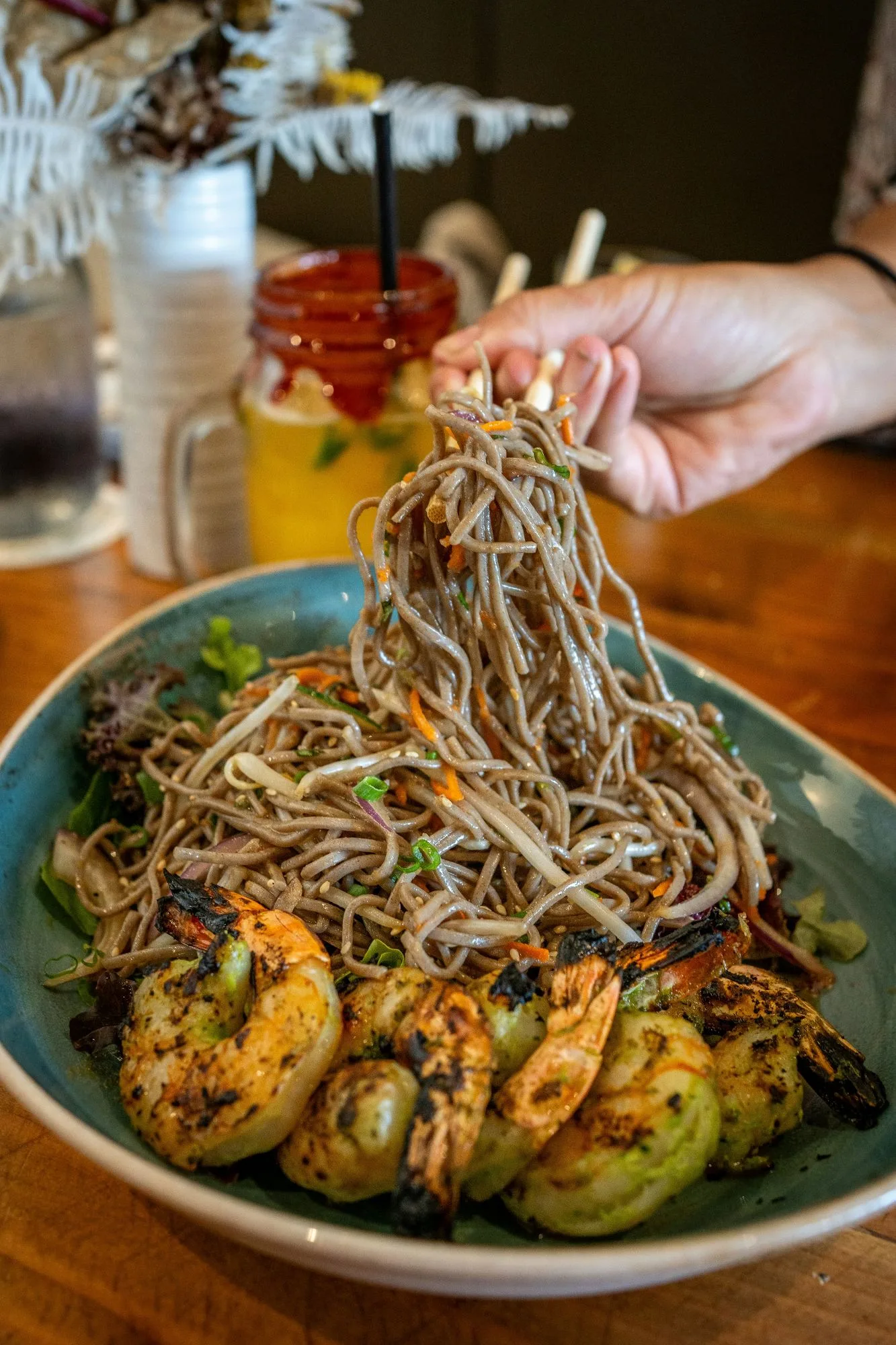
Why Hawaii’s Local Food Is Unmissable
Iconic Hawaiian Dishes to Try
1. Poke
-
Diced raw fish (typically ahi tuna) mixed with soy sauce, sea salt, green onions, and limu (seaweed).
-
Ubiquitous at poke shops, grocery stores, and fish markets statewide.
2. Loco Moco
-
A hearty plate: rice topped with a hamburger patty, brown gravy, and fried egg.
-
Originated in Hilo in 1949; endlessly customizable.
3. Spam Musubi
-
Grilled Spam on rice, wrapped in nori — a portable snack widely available.
-
Hawaii leads the U.S. in Spam consumption.
4. Huli-Huli Chicken
-
Mesquite‑grilled chicken basted with teriyaki-like sauce—introduced in 1955.
-
A staple at community fundraisers and roadside stands.
5. Plate Lunch
-
Two scoops of rice, mac salad, and a protein like kalua pork, katsu, or Korean BBQ
-
A reflection of Hawaii’s multicultural heritage.
6. Malasadas
-
Portuguese-style sugar-coated doughnuts, especially famous at Leonard’s Bakery
-
Sweet morning treat.
7. Lomi Lomi Salmon
-
Fresh diced salmon with tomatoes and onions, often served at luaus
8. Kūlolo
-
Taro & coconut pudding—chewy, fudge-like Hawaiian dessert
Where to Eat Like a Local
Oahu (Honolulu & Beyond)
-
Helena’s Hawaiian Food: traditional fare like poi & kalua pig.
-
Musubi Cafe Iyasume: top-tier Spam musubi under shady trees.
-
Food trucks (North Shore): garlic shrimp plates and shave ice at Kama‘aina favorites like Matsumoto.
Big Island (Hilo & Kona)
-
Cafe 100 (Hilo): birthplace of loco moco.
-
Suisan Fish Market (Hilo): award-winning poke takeaway.
Maui
-
Star Noodle (Lahaina): order Lahaina Fried Soup—a unique noodle dish.
-
Local markets: try shave ice, poke, and malasadas.
Kauai
-
Farmers markets (Upcountry): fresh Maui onions, local produce, shave ice.
Cultural & Travel Tips
-
Eat like a kama‘āina: seek mom‑n‑pop style eateries and hole‑in‑the‑wall gems.
-
Time it right: festivals and farmers markets are great for sample‑style feasting.
-
Understand terms: “local food” often means comfort dishes from the plantation era, while “Hawaiian food” refers to native dishes like poi & kūlolo.
Book Your Food-Fueled Trip
-
Trip.com – Offers culinary tours, luau bookings, and island-hopping packages.
-
Kiwi.com – Great for flexible multi-island flights and timed arrivals for food events.
Summary
Hawaii’s local food scene is a flavorful mosaic of native tradition, immigrant influences, and modern creativity. From poke and loco moco to Spam musubi and kūlolo, every island offers a taste of its story. Dive in, ask locals what’s best, and don’t skip the plate lunch—it’s comfort food history on a tray.
FAQs
Q: Is there vegetarian local food in Hawaii?
A: Yes—dishes like lomi lomi salmon, kulolo (taro pudding), malasadas, and some plate lunch sides (mac salad) work, though most meals include meat or fish.
Q: What’s the best place to try poke?
A: Look for fish markets—Suisan Fish Market (Hilo) and grocery poke counters on Oahu are top picks.
Q: Can I try these foods on a budget?
A: Absolutely—food trucks, plate lunch spots, and local markets offer hearty meals for under $15.
Q: What’s a Hawaiian luau?
A: A celebratory feast featuring imu-cooked kalua pig, lomi salmon, poi, and cultural performances—book via Trip.com for local authenticity.
Q: Are these dishes healthy?
A: It varies—poke and salads are light, while fried foods like loco moco or malasadas are indulgent. Balance is key.
